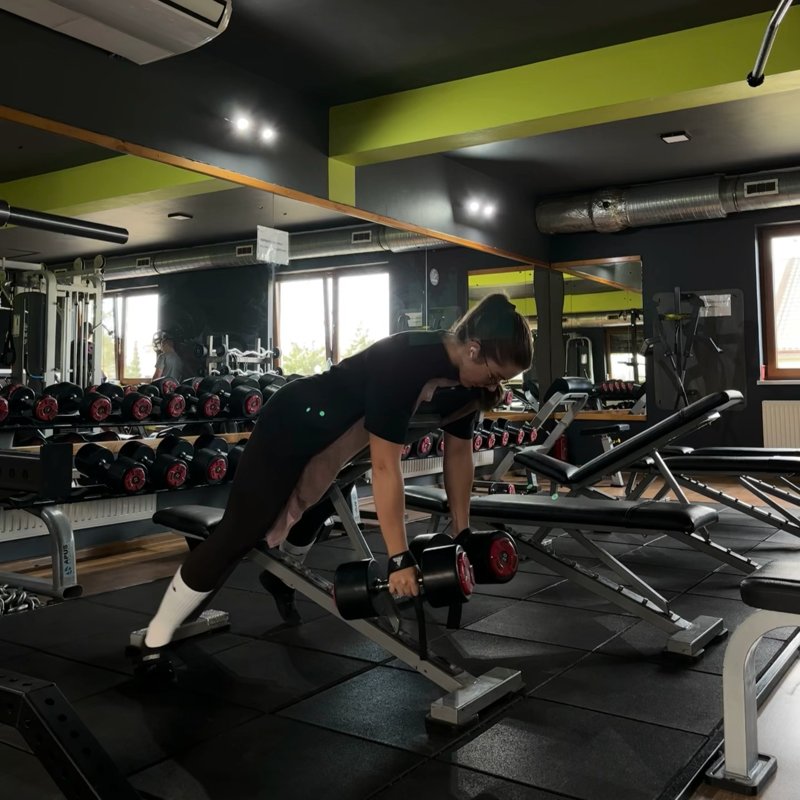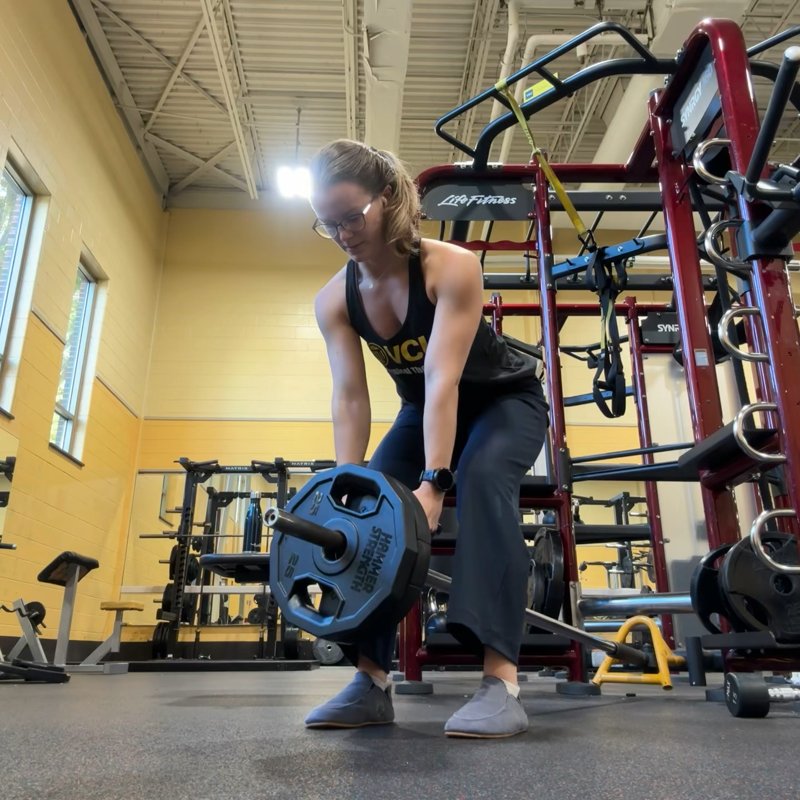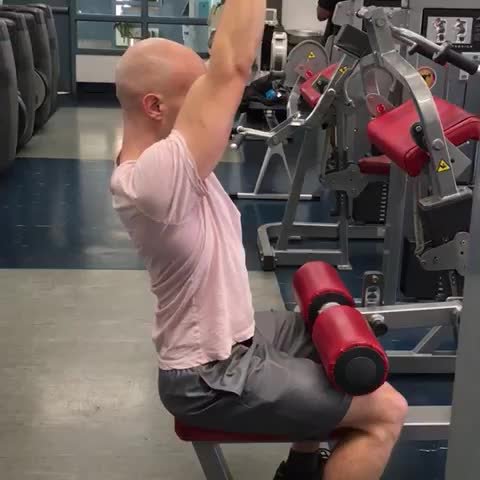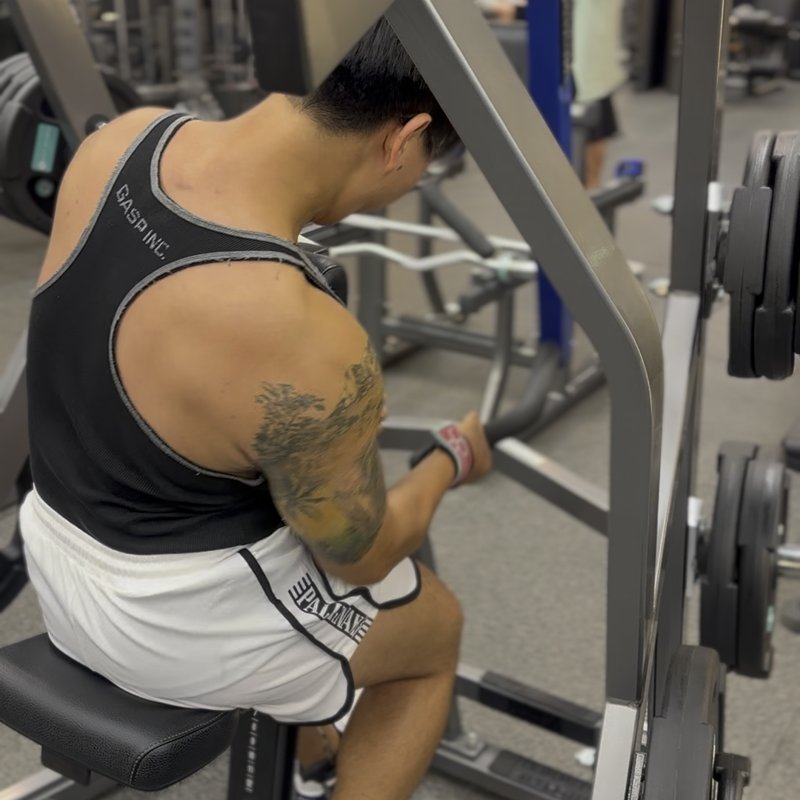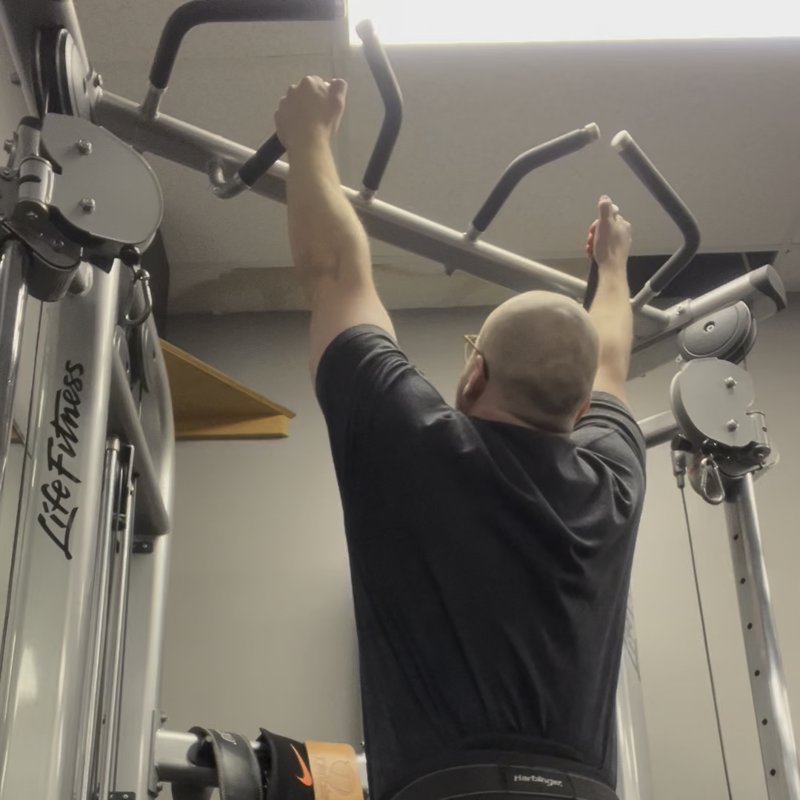Machine Row: The Ultimate Guide
The Machine Row is a compound pulling exercise performed on a rowing machine that primarily targets the latissimus dorsi, rhomboids, and middle trapezius while also engaging the biceps and rear deltoids.
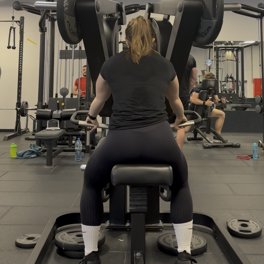
Quick Facts
Key Benefit
Back thickness and strength with guided movement pattern
Primary Muscles
Lats, Rhomboids, Traps
Secondary Muscles
Biceps, Brachialis, Erector Spinae, Posterior Deltoids
Equipment
machine
Difficulty
Beginner
Type
Compound
In This Guide
Ready to master the Machine Row?
Track your progress, see improvements over time, and build strength consistently.
Download GravitusThe Machine Row is a foundational back exercise that provides an excellent combination of effectiveness and accessibility for trainees of all levels. This movement primarily targets the muscles of the middle and upper back, including the latissimus dorsi, rhomboids, and middle trapezius, while also engaging the biceps and rear deltoids as supporting muscles. What makes the machine row particularly valuable is its guided movement path, which reduces the learning curve and stabilization demands compared to free-weight alternatives. This allows lifters to focus intently on the target muscles rather than balance and coordination, making it an excellent choice for beginners learning proper back training mechanics or experienced lifters looking to isolate specific back muscles. The machine's design typically provides support for the chest and stabilization for the torso, reducing lower back stress that can occur with some free-weight rowing variations. Additionally, the fixed movement pattern helps ensure proper form and reduces the risk of using momentum or body english that can diminish effectiveness. Whether your goal is to build back thickness, improve posture by strengthening the posterior chain, or add balanced muscular development to complement pressing movements, the machine row delivers reliable results in a controlled, joint-friendly manner.
Benefits of Machine Rows
The machine row offers several distinct advantages that make it a valuable addition to any back training program.
Simplified Movement Pattern
The guided path eliminates stabilization requirements, allowing beginners to learn proper back recruitment and experienced lifters to focus on maximum muscle activation.
Reduced Lower Back Stress
Most row machines provide torso support or positioning that minimizes stress on the lumbar spine compared to bent-over free-weight variations.
Consistent Resistance
The machine provides smooth, consistent resistance throughout the entire range of motion, maintaining tension on the target muscles.
Isolation Potential
With reduced balance demands, you can focus entirely on feeling the target back muscles work, enhancing mind-muscle connection.
Progressive Overload Simplicity
The weight stack or plate-loaded design makes tracking and progressively increasing resistance straightforward and precise.
Proper Form & Technique
Setup
- Adjust the seat height so that the handles or bar aligns approximately with your lower chest when seated.
- Set the appropriate weight on the stack or plate-loaded machine.
- Sit facing the machine with your feet placed firmly on the footrests or floor.
- Ensure your knees are slightly bent and your body is positioned at the distance that allows full arm extension without leaning forward.
- Grasp the handles with a neutral grip (palms facing each other) or the bar with an overhand grip, depending on the machine design.
- Sit tall with chest up, shoulders pulled back and down, and a slight arch in your lower back.
- Brace your core to stabilize your torso throughout the movement.
Movement
- Begin with your arms extended forward, feeling a stretch in your lats and mid-back muscles.
- Initiate the movement by retracting your shoulder blades—think of squeezing them together before bending your elbows.
- Pull the handles or bar toward your torso by driving your elbows back and down.
- Keep your chest up and avoid excessive backward leaning during the pull.
- Continue pulling until the handles or bar reaches your torso—typically at the lower chest or upper abdominal level.
- Squeeze your back muscles at the point of maximum contraction, holding briefly for enhanced mind-muscle connection.
- Slowly return to the starting position with controlled movement, allowing your arms to fully extend and shoulder blades to protract.
- Maintain tension throughout the entire movement, avoiding rest at the extended position.
- Repeat for the desired number of repetitions, maintaining proper form throughout.
Key Form Tips
Shoulder Position
Keep your shoulders pulled down and back throughout the movement, avoiding shoulder elevation or forward rounding.
Elbow Path
Drive your elbows backward rather than upward or outward for optimal back engagement.
Torso Stability
Maintain a stable torso position with minimal movement—the action should occur at the shoulder joints and elbows, not the lower back.
Range of Motion
Achieve full extension at the start for a complete stretch and full contraction at the finish for maximum muscle activation.
Mind-Muscle Connection
Focus on feeling your back muscles work rather than moving the weight from point A to point B.
Muscles Worked
Primary Muscles
- lats: The large, fan-shaped muscles of the back that run from the spine to the upper arm, primarily responsible for the pulling motion.
- Rhomboids: The muscles between your shoulder blades that retract the scapulae and are heavily engaged during the squeezing phase of the row.
- traps: The trapezius muscle, particularly the middle and lower fibers, that work to retract and stabilize the shoulder blades throughout the movement.
Secondary Muscles
- biceps: The front arm muscles that flex the elbow during the pulling motion, serving as secondary movers.
- posterior deltoids: The posterior portion of the shoulder muscles that assist in horizontal pulling and shoulder extension.
- brachialis: Arm muscles that assist with elbow flexion during the pulling phase of the row.
- Erector Spinae: The muscles running along the spine that work isometrically to maintain proper posture during the exercise.
Common Mistakes and How to Fix Them
Using Momentum and Body Rocking
Swinging the torso back and forth to move the weight reduces back muscle activation and increases injury risk. Maintain a stable torso position with minimal movement throughout the exercise. Select a weight that allows you to control the movement without momentum. Focus on initiating the pull with your back muscles rather than your arms or body movement. If necessary, reduce the weight until you can perform the exercise with strict form.
Insufficient Range of Motion
Not achieving full extension at the start or complete contraction at the finish limits muscle development. Ensure you allow your arms to extend fully at the start position, feeling a stretch in your back muscles. Pull the handles all the way to your torso, squeezing your shoulder blades together at the contracted position. Avoid cutting the movement short at either end of the range. If the weight is too heavy to complete the full range, decrease it until proper form can be maintained.
Leading with the Arms
Initiating the pull with the arms rather than the back reduces back muscle engagement. Begin the movement by retracting your shoulder blades before bending your elbows—think "back first, then arms." Focus on driving your elbows back rather than just pulling with your hands. Practice the movement with lighter weight while concentrating on the sensation in your back muscles. Consider using a mental cue like "elbows to pockets" to reinforce proper pulling mechanics.
Elevated Shoulders
Allowing the shoulders to shrug up toward the ears during the movement shifts emphasis away from the target back muscles. Keep your shoulders pulled down and back throughout the entire exercise. Prior to beginning the set, consciously depress your shoulder blades downward and maintain this position. If you notice shoulder elevation occurring during your sets, it may indicate the weight is too heavy or fatigue is compromising form. Consider incorporating additional shoulder depression exercises like scapular pull-ups to strengthen this pattern.
Excessive Backward Leaning
Leaning too far backward during the pull turns the exercise into more of a chest-supported row than an upright row. Maintain an upright torso position with your chest up and core engaged. Use the chest pad (if the machine has one) to help stabilize your position. Focus on moving your arms and shoulder blades while keeping your torso relatively stationary. Avoid the temptation to lean back as a way to move more weight—this reduces the effectiveness of the exercise for the intended muscles.
Exercise Variations
Grip Variations
-

Wide-Grip Machine Row
Using a wider than shoulder-width grip to place greater emphasis on the upper back, rhomboids, and rear deltoids.
-

Narrow-Grip Machine Row
Employing a grip closer than shoulder width to increase lat engagement and target the lower portions of the back.
-
Underhand Grip Machine Row
Using a supinated (palms-up) grip if the machine allows, which increases biceps involvement and can target the lower lats more effectively.
-
Neutral Grip Machine Row
Using handles with palms facing each other, which may be more comfortable for the wrists and elbows while providing balanced back development.
Technique Variations
-

One-Arm Machine Row
Performing the movement with one arm at a time to address potential imbalances and increase core engagement as a stabilizer.
-

Paused Machine Row
Adding a deliberate 2-3 second pause at the point of maximum contraction to increase time under tension and enhance mind-muscle connection.
-

Drop Set Machine Row
Performing a set to near failure, then immediately reducing the weight and continuing for additional repetitions without rest.
-

High-Rep Machine Row
Using lighter weight for higher repetitions (15-20+) to target muscular endurance and increase metabolic stress in the back muscles.
Technical Focus Variations
-

Scapular Machine Row
Focusing solely on shoulder blade retraction and protraction with minimal elbow bend to isolate the mid-back muscles.
-

Eccentric-Focused Machine Row
Emphasizing the lowering phase with a 3-5 second negative to increase muscle damage and hypertrophy stimulus.
-

Mechanical Advantage Drop Set
Starting with a harder grip/position and transitioning to an easier variation as fatigue sets in, all within the same set.
Frequently Asked Questions
Machine rows aren't necessarily more or less effective than free-weight variations—they're simply different, with unique advantages and limitations. The machine's guided path reduces stabilization demands, which has two primary effects. First, it allows for greater focus on the target back muscles with less energy devoted to balance and coordination. This can be beneficial for maximizing mind-muscle connection and working the intended muscles more directly. Second, it typically enables lifters to handle heavier weights or more volume, which can accelerate hypertrophy in certain training phases. However, the reduced stabilizer recruitment means less development of the smaller muscles that contribute to overall back function and fewer coordination and balance improvements. Free-weight rows generally provide greater functional carryover to real-world activities and sports performance. For optimal development, most trainees would benefit from including both machine and free-weight variations in their training program—perhaps using machines for higher-volume hypertrophy work and free weights for more functional strength development. The "best" option ultimately depends on your specific goals, experience level, injury history, and individual biomechanics.
Most people respond well to training each major muscle group 2-3 times per week. For machine rows specifically, incorporating them 1-2 times weekly is typically optimal for most trainees. If following a body part split, you might perform this exercise on your designated back or pull day once per week. With an upper/lower split, it could be included in one of your two weekly upper body sessions. For full-body training, it might appear in 1-2 of your 3-4 weekly workouts. Consider your overall back training volume—the machine row is just one component of complete back development that should be balanced with vertical pulling (pull-ups, lat pulldowns), free-weight rows, and potentially direct rear deltoid or trap work. More advanced lifters might benefit from undulating approaches where the exercise appears twice weekly but with different loading parameters each session (e.g., heavier/lower reps in one session, lighter/higher reps in another). Monitor recovery between sessions—if back performance decreases or joint discomfort develops, you may need more recovery time or reduced volume. A good starting point is performing 3-4 working sets 1-2 times weekly, adjusting based on your individual response and recovery capacity.
The ideal grip for machine rows depends on your specific goals, equipment design, and individual comfort. Different grips emphasize various portions of the back musculature: An overhand (pronated) grip with hands wider than shoulder width tends to emphasize the upper back, rhomboids, and rear deltoids. A neutral grip (palms facing each other) typically feels more natural for many lifters and provides balanced development across the back muscles while being generally joint-friendly for the wrists and elbows. An underhand (supinated) grip, if the machine allows it, increases biceps involvement and can target the lower lats more effectively. A narrow grip (hands closer than shoulder width) generally places more emphasis on the lower lats and overall back thickness. For comprehensive development, don't limit yourself to one grip—consider rotating between different hand positions either within the same workout (different grips for different sets) or across different training sessions. Pay attention to which grip provides the strongest mind-muscle connection for your back and which feels most comfortable for your joints. If you're new to the exercise, the neutral grip is often a good starting point due to its balanced muscle recruitment and joint-friendly position.
The ideal pulling position depends on your specific goals and the angle of the machine. Pulling to the lower chest or upper abdominal area (belly button to sternum region) typically provides the most complete back development and represents the mechanical position where your back muscles can generate the most force. This "mid-torso" position generally allows for optimal shoulder blade retraction and lat engagement. Pulling higher toward the upper chest or clavicles shifts more emphasis to the upper back, rhomboids, and rear deltoids. This can be beneficial for those focusing on improving posture or upper back development. Pulling lower toward the lower abdomen increases lower lat activation but may require more torso lean for some machines. The most important factor is maintaining proper form regardless of pulling height—avoid excessive body movement or compromising posture to reach a specific position. Experiment with different pulling heights while paying attention to which position creates the strongest contraction in your target muscles. For most general back development purposes, aiming for the mid-torso region (lower chest to upper abdomen) provides the best overall stimulus.
Video Demonstrations
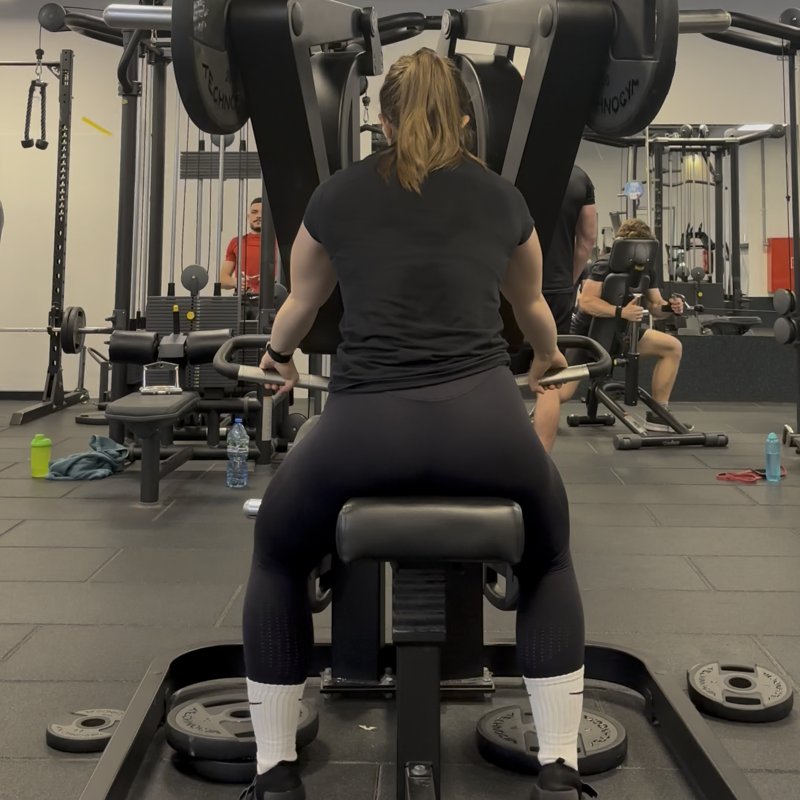
Log in to watch video demonstrations
Login to Watch3 video demonstrations available
Find more video demonstrations in the Gravitus app
Track your progress with Gravitus
Download Gravitus to log your workouts, track your progress, and join a community of fitness enthusiasts.

Helpful Resources
One Rep Max Calculator
Find your one rep max for any exercise without maximal testing. Essential for developing effective strength training programs.
Calculate 1RMWorkout Programs
Follow structured workout programs created by fitness professionals to maximize your strength and muscle gains.
View Programs